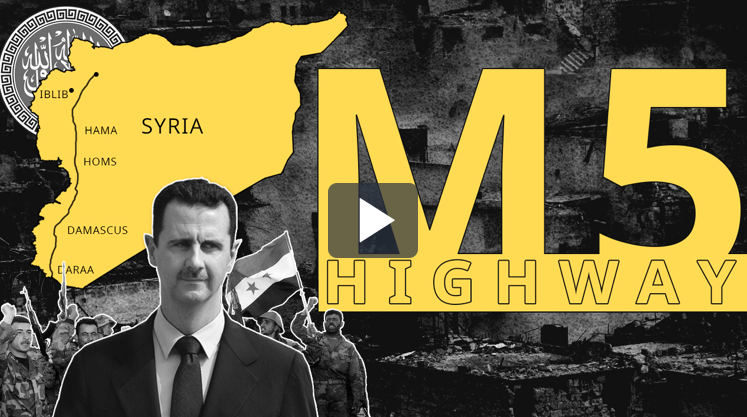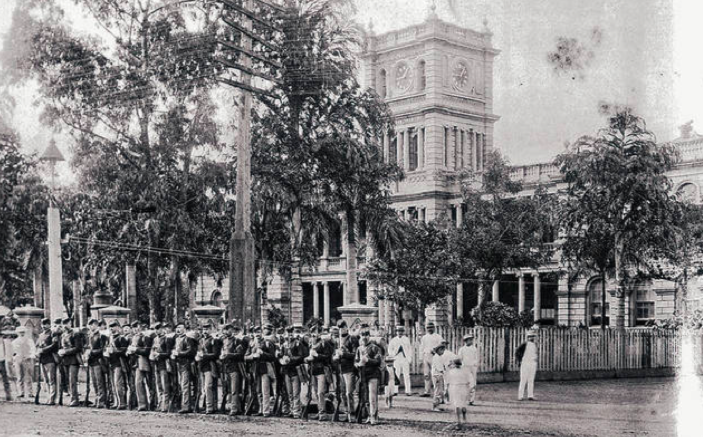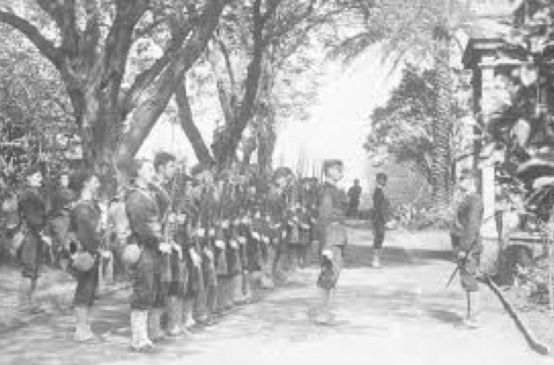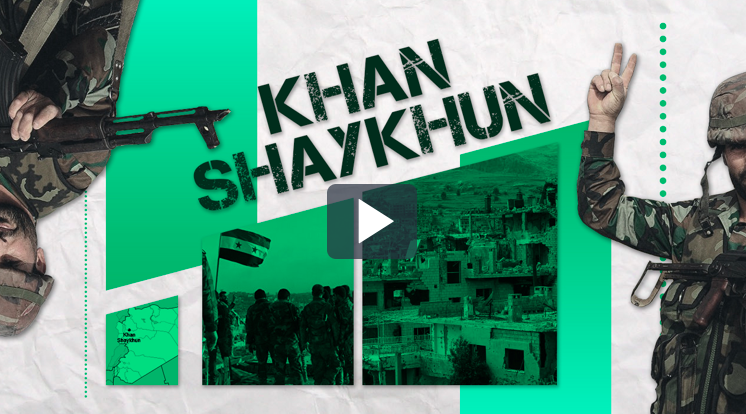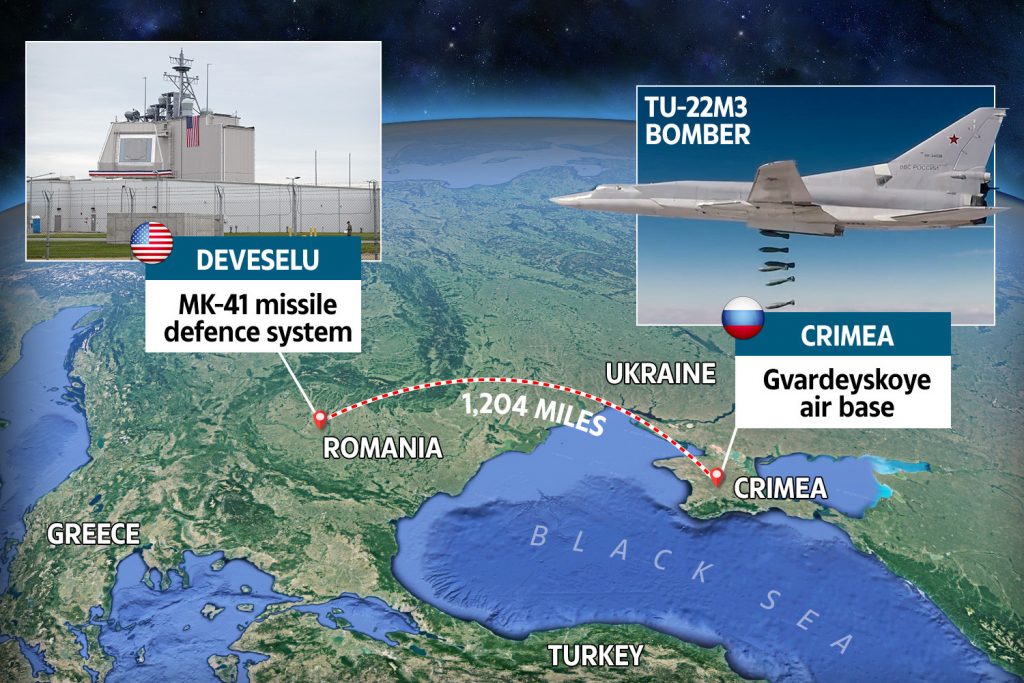History: US Encroachment Encouraged Japan To Support Hitler and Mussolini
August 21st, 2019 by Shane Quinn
During late September 1940, Japanese representatives like Saburō Kurusu flew to Berlin where they were greeted by the ruler of Europe, Adolf Hitler. Kurusu, an experienced career diplomat from Yokohama, could not help but notice the Nazi self-assurance at a time when the Third Reich appeared impregnable.
Kurusu entered the new Reich Chancellery building, on 27 September 1940, where he signed a significant military alliance with the Nazis and Benito Mussolini’s Italy, called the Tripartite Pact. This largely forgotten agreement was designed to be directed against the Soviet Union, and also the United States, as Moscow and Washington were surely aware.
However, Japan had reason to feel aggrieved, particularly so with America, easily the world’s strongest country. US business and military power had clearly encroached into east Asian territories, vast spaces in which the Japanese had burning ambitions of their own.
At the heart of the issue was: Japan constituted a proud nation which existed for many centuries, that had never been conquered throughout its history, and she now desired to be left unhindered in deciding her destiny, whatever it may be. Japan was rapidly industrializing and, as a resource-poor nation, began enlarging in search of badly needed mineral riches.
American administrations, not satisfied with control over the Western hemisphere, wished to subordinate Japan to Washington’s far-reaching aspirations in the Pacific. This was a recurring theme behind the diplomatic offensive aimed at Tokyo during the 1930s. Yasaka Takagi, a professor of US history, asked with some reason “why there should be a Monroe Doctrine in America and an Open Door principle in Asia”?
A separate stratagem of US diplomats in the early 1940s related to Japan’s membership of the Nazi-formulated Tripartite Pact, utilized as a propaganda tool for expected hostilities with Tokyo. Paul W. Schroeder, the US historian, realized this when he wrote,
“The Tripartite Pact was revived as an issue by the American diplomats, because it was expected to be useful in selling the anticipated war with Japan to the American people”.
With the Japanese surrounded by major foes, cut adrift and isolated, their leaders looked about them for solace, and saw in Europe the tempting allure of the seemingly unbeatable Nazis. Somewhere in the background lay Mussolini’s fascists. Japanese accession to the Tripartite Pact was based on a mixture of desperation and geopolitical reasoning, rather than from devious design.
In the hours preceding Japan’s signing of the Tripartite Pact, Washington had placed a total embargo of scrap iron against Tokyo. This was a troublesome issue indeed for Japan, which relied on scrap metals for their material and monetary value.
The scenario of a junior partnership with Washington was, in addition, a most intolerable one not only for Japan’s hardline militarists, but also to much of her moderate and nationalistic elements. They did not wish to be relegated to the status of “a peaceful, contented nation of merchants subcontracting with the United States”, which is what unfolded later.
The American pacifist thinker, A. J. Muste, envisaged the coming global clash with rival states “as a conflict between two groups of powers for survival and domination”. At one side Muste saw Britain, America and “free” France which “controls some 70% of the earth’s resources” while “On the other hand stands a group of powers such as Germany, Italy, Hungary, Japan, controlling about 15% of the earth’s resources”. It was a long-standing myth that the Axis nations held dominion over much of the world during the early 1940s.
In January 1940, Washington terminated the Japanese-American commercial treaty of 1911 – which shifted Japan’s focus to plans for occupation of French Indochina, the Dutch East Indies (Indonesia) and the Philippines, all Western colonies within Tokyo’s realm of interest. The discontinuation of this treaty was a critical factor that led many Japanese moderates towards recognizing the need to support the Axis powers.
Hitler had been much reassured when welcoming Japan to the fold, but he was somewhat overestimating Japanese capacities. Tokyo’s decision in laying waste to Pearl Harbor, during late 1941, was akin to the response of a wild animal increasingly cornered. Particularly deadly to Japanese aims was that, four months prior to Pearl Harbor, the Roosevelt administration froze all Japanese assets across America, with Britain and the Dutch government-in-exile following suit – in one fell swoop, 90% of Japan’s oil imports were wiped out along with 75% of her foreign trade.
Donald J. Goodspeed, a Canadian historian who fought extensively in World War II, wrote that
“Roosevelt’s action was drastic indeed; it amounted to a declaration of economic war… By the end of the month [July 1941] Japan was forced to begin using her oil reserves, of which she had only an eighteen-month supply. Not surprisingly, therefore, when the Japanese cabinet considered the alternatives open to it, it discussed the possibility of war”.
Twelve months previously, in July 1940, Washington hit Tokyo with an embargo on aviation fuel which the latter could acquire from nowhere else – and just before the Tripartite Pact was endorsed, in an effort to ease her supply shortages, Japan invaded Northern French Indochina, a landmass situated about 1,000 miles south-west of Japanese territory.
Tokyo’s attack on the northern part of Indochina was in fact based on understandable fears. The American historian and activist Noam Chomsky wrote, concerning the Japanese position on north Indochina, that
“The goals were basically two: to block the flow of supplies to Chiang Kai-shek and to take steps towards acquisition of petroleum from the Dutch East Indies”.
China’s anti-communist figure, Chiang Kai-shek, was receiving continued backing from the West in his purportedly nationalistic desires. Chinese nationalism was a threat to Japanese imperialist claims, such as in north-east China, encompassing mineral-laden Manchuria.
Japan’s strategic outlook mostly came as a reaction to those policies enacted by the great powers, and thereafter Tokyo was hardly unique in its actions.
Chomsky outlined that,
“Japan had been opened to Western influence by a threat of force in the mid-nineteenth century, and had then undertaken a remarkably successful effort at modernization”; and subsequently that “Japan joined the other imperialist powers in the exploitation of East Asia and took over Formosa, Korea and parts of southern Manchuria. In short, by the late 1920s, Japan was what in modern political parlance is called a ‘democracy’ and was attempting to play the normal role of a great power”.
Tokyo’s attempt to play the normal role of a great power was consistently hampered by Western intrusion. In February 1922, Japan was deputized to US and British power with ratification of the Washington Naval Treaty; reinforced eight years later with the London Naval Treaty shortly after the Great Depression struck.
American and British elites were refusing to grant Japan hegemony in her own waters. The same governments insisted on complete control over their own spheres of course.
A very serious consequence of the Western stranglehold on Japan was that, from the early 1930s, it led in part to the growth of far-right factions within the Imperial Japanese Army. While the fascist forces in Tokyo strengthened their grip, Japan’s civilian hierarchy – seen as weak-willed – was beginning to wither through intimidation, assassination and public disenchantment.
Tokyo’s politicians were blamed for, among other things, acceptance of the above-mentioned naval treaties.
Japan’s political scientist Masao Maruyama noted that by 1932, “the energy of radical fascism stored up in the preparatory period now burst forth in full concentration” in Japan – aided by Japanese enlargement along with their decision to withdraw from the League of Nations in February 1933.
Throughout the 1930s, Western economic policies made an uncomfortable situation even worse for Japan. The 1932 Ottawa conference, held in the Canadian capital that summer, represented a considerable gathering of statesmen from the Commonwealth countries. A key outcome of their four-week long discussions “dealt a blow to Japanese liberalism”, as the Institute of Pacific Relations (IPR) remarked, a well known Western-based NGO.
The IPR results showed that Japan was faced “with a serious shortage of iron, steel, oil and a number of important industrial minerals” as “the greater part of the supplies of tin and rubber, not only of the Pacific area but for the whole world are, by historical accident, largely under the control of Great Britain and the Netherlands”, while with advancing years, increasingly so America.
The Ottawa agreements established a closed system of economy, in effect blocking Japan from trading with the Commonwealth. Washington’s policy of strict independence proceeded in a similar vein, preventing Tokyo from attaining a slice of the action.
Japan sought to mimic these self-serving ends with regard Manchuria, an area vital to Japanese demands. Tokyo invaded Manchuria in mid-September 1931, and the following year changed its name when creating the puppet state of Manchukuo.
Manchuria, now Manchukuo, had been under growing threat by Western-backed Chinese nationalists like Chiang Kai-shek, who desired the region’s unity to China; and Manchuria featured too on the radar of a militarized Soviet Union to the north.
As the 1930s progressed, America was recovering well from the Great Depression. The Japanese were not quite so fortunate, however.
Tokyo’s effort, to continually augment its trade in the great state of India for example, had been cut off in 1933 due to Western coercion of the Indian government; which implemented a virtually prohibitive tariff on imported cotton goods to India. Japanese traders felt most keenly the imposition of these tariffs, with Tokyo’s markets until the early 1930s steadily growing in India, the “Jewel in the Crown” of Britain’s eroding empire.
Japan’s business community tried to make inroads into the Philippines, a resource-rich island nation. Having been granted little alternative the Japanese were compelled, in October 1935, to accept an agreement curtailing shipments of cotton textiles from
Japan to the Philippines for two years; as American imports to the Philippines remained duty-free.
William W. Lockwood, an American academic specializing in Japanese economic development, noted that US supremacy relating to Philippine trade was
“attributable in large degree to the Closed Door policy of the United States, which has established American products in a preferential position. Were Japanese businessmen able to compete on equal terms, there is no doubt but that Japan’s share of the trade would advance rapidly”.
It was not allowed to. Time and again Japanese objectives were denied to them through the unfair Western-engineered financial strategies. Moreover, American tariffs on numerous Japanese items exceeded 100%.
Japanese textile manufacturing, hit especially hard by discriminatory policies, produced almost 50% of the total value of her manufactured goods, and about 66% of the value of Japan’s full exports. The Japanese textile industry also employed around 50% of her entire factory force of workers.
Japan was certainly an industrialized state – that is, in an Asian context, as she still lagged well behind her Western rivals. From 1927 until 1932, Japan held about one seventh of the energy output per capita in comparison to Germany. Japan’s pig-iron production consisted of less than half that of Luxembourg’s total. Luxembourg even produced slightly more steel than Japan.
Tokyo was not in a position to accept a situation, through which the Western powers benefited most favourably from tariff barriers in countries they dominated, such as Malaya, Indochina, India and the Philippines.
By the mid-1930s, Japan was suffering further due to a steep decline in trade with America, mainly because of Depression-era tariffs signed into law in Washington. Japan’s attempt to continue trading with neighbouring China likewise regressed sharply, as Western business strength embedded itself in major Chinese cities like Peking and Nanjing.
The pressure was mounting on Tokyo. As a consequence it was not altogether surprising when, in the summer of 1937, Japan started to enlarge at the expense of China, a huge country rich in coal, oil and gas, just what was required.
The Japanese were alarmed too by the closer relationship emerging between China and the Soviet Union, borne out on 21 August 1937 with the Sino-Soviet Non-Aggression Pact signed in Nanjing. This accord was formulated against Tokyo, with Joseph Stalin in following months providing the Chinese with $250 million in aid “to be used primarily for the purchase of Soviet weapons”. The deliveries consisted of more than 900 Soviet aircraft, 82 tanks, large quantities of machine guns, rifles, bombs, etc., along with over 1,500 Soviet military advisers and around 2,000 members of the air force.
It is little wonder that Japan was fretting about “the Bolshevization of East Asia”. Faced with growing external problems, Japanese hopes went undimmed. On 22 December 1938 Japan’s prime minister, Fumimaro Konoe, said that
China “should recognize the freedom of residence and trade on the part of Japanese subjects in the interior of China, with a view to promoting the economic interests of both peoples”.
Contrary to perceptions, Tokyo’s long-term expectations regarding China were not to swallow the country alive, or even to absorb large parts of it.
Chomsky explained of Japanese intentions towards China,
“There were to be no annexations, no indemnities. Thus a new order was to be established, which would defend China and Japan against Western imperialism, unequal treaties and extraterritoriality. Its goal was not enrichment of Japan, but rather cooperation (on Japanese terms, of course). Japan would provide capital and technical assistance; at the same time, it would succeed in freeing itself from dependence on the West for strategic raw materials”.
One of Tokyo’s aspirations, to unshackle itself from material reliance on the West, was a cornerstone of her expansionist dreams. In the end, those dreams would descend to the worst of nightmares.
*
Note to readers: please click the share buttons above or below. Forward this article to your email lists. Crosspost on your blog site, internet forums. etc.
Shane Quinn obtained an honors journalism degree. He is interested in writing primarily on foreign affairs, having been inspired by authors like Noam Chomsky. He is a frequent contributor to Global Research.
Featured image: Nomura (left) and Kurusu (right) meet Hull on November 17, 1941, only three weeks before the attack on Pearl Harbor (December 7, 1941) (Source: Wikimedia Commons)




